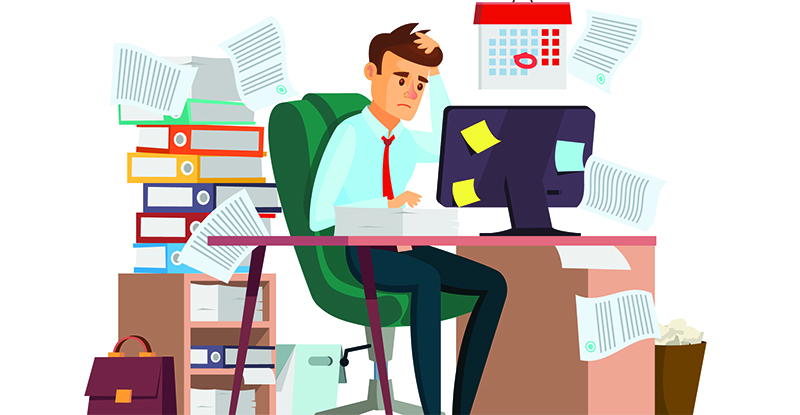
In our podcast episode, Ann Gomez, founding president of Clear Concept Inc., chats with Leah Giesbrecht, communications specialist at CPABC, about techniques you can use to safeguard your time, increase your focus, and boost your productivity. Part of our Coffee Chats with CPABC podcast series.
Do you feel like you’re pulled in too many directions at work? Or that you don’t have enough time to deal with all of the requests and interruptions that come your way? Competing demands, interruptions, unexpected issues, email volume – these challenges all have a way of consuming our time and decreasing our productivity. Fortunately, there are ways to protect your time and techniques that will help you plan how to use it effectively.
Focus on 3 core priorities
If there's a common theme among busy professionals, it is that we are trying to do too much at one time. Multitasking doesn't work, and there's research to support this. When we focus on one thing at a time, we work much faster. We produce better-quality work. We're less stressed.
From my experience coaching professionals and executives, I know we have a limited number of projects or initiatives we can focus on at any one time. That magic number is three. Three core priorities. Everything else is either a supporting task, a distracting task, or a future priority.
When defining your core priorities, think about groups of work or specific projects. For example, servicing your clients could be one priority. Working on a project or process improvement initiative that has a discreet start and end date are two more examples. We want to manage expectations about everything else. Be mindful that any other meeting, brainstorming, conversation, or email related to a future opportunity takes you away from your three core priorities. As individuals, as leaders, as organizations, we want to make sure we're not diluting our effort and trying to do too many things at the same time.
Manage your distractions and interruptions
Distractions and interruptions have a way of sabotaging our workday. The first step to minimizing them is to name them. Most people typically point to emails, texts, phone calls, or coworkers saying, "Hey, do you have a minute?" But another huge source of interruptions is ourselves. One study found that 44% of all interruptions are self-imposed. We interrupt ourselves when we choose to look at email, switch to another task, or grab a coffee.
That doesn't mean you should never shift gears in your day. Rather, when you sit down to work on a task, identify three factors – your goal, duration, and reward. Your goal is what you want to accomplish, and the duration is the time you’ve allocated to complete it.
The reward could be anything. This might sound a bit groan-worthy, but I assert that the best reward in the workplace is to check your email because that is a huge source of temptation. Turn your alerts off and don’t have your email displayed on a second monitor. Let email be your reward after you've completed that draft, or reward yourself with a quick break. It’s up to you.
Maintain a buffer to deal with unknown and unexpected events
Unexpected events can really throw off our day, especially when we’re forced to switch priorities. However, distinguishing between unexpected events and unknown events can help us use our time more effectively.
We all have things flying at us throughout the day. We are receiving requests that we want to be responsive to – including requests from colleagues and clients. We know we're going to have to react to incoming requests. These requests and their exact nature are unknown, but they're not unexpected. So we can budget time to address these.
Let's say roughly three or four hours of your day is devoted to being responsive to what comes in that day. That gives you the remaining time available to plan – to have meetings, to work on specific projects, and so on. It’s important to note that if we plan too much in our day, we don't have any wiggle room to be responsive to other issues or tasks.
Yes, sometimes, unexpected events really do throw off all of our time. In that situation, you can apply what I like to call the “Simplify Filter.” To do this, consider everything on your list, everything you need to do that day, and think:
- How can I streamline?
- How can I scale back?
- How can I seek help?
This approach is also incredibly useful when your to-do list is too long. The Simplify Filter helps us all optimize our team and expand our impact.
Take back control of email
Email can consume your day if you let it. The good news is, there are some simple habits that can help you master your inbox.
Dedicate time. Don’t do email all day long. Don't have email open all day long. Do email in batches between your other work. Aim for timely, not instantaneous responses. You’ll still be accessible, but you’ll also protect time for other important work.
Do it now. Commit to only reading an email, whether it be on your phone or computer, if you are prepared to act on it. This could involve responding, delegating, filing or deleting it. Eliminate the redundancy of having to read an email twice.
Defer as appropriate. Stop treating your inbox like your to-do list. If there is a bigger task requiring lots of your time, add it to your to-do list. Let the other person know, for example, "I'm on it. I received your request. I'll get you what you need by Friday end of day." Then, file that email in a folder or your archives and get it out of your inbox. Just don't leave that email in your inbox. This is how our inbox quickly becomes cluttered.
Our workdays can be hectic. There’s no doubt that our task loads can be challenging. But by protecting our time and planning how to use it effectively we can safeguard our productivity.
Ann Gomez is an engaging speaker and the founding president of Clear Concept Inc. She is passionate about empowering the world’s busiest people to perform at their best. She is also the best-selling author of The Email Warrior, an active blogger and media spokesperson.



